WILDLIFE CONSERVATION
Orphaned black rhinos get a second shot at life after being moved to new home
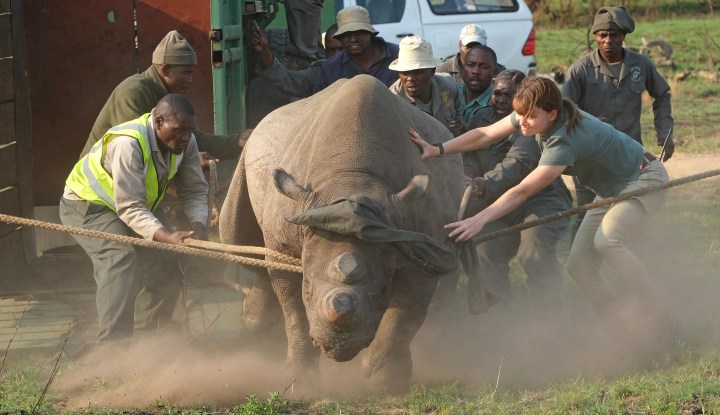
The move is part of a project that began two decades ago to expand the numbers and range of this critically endangered rhino species that has all but disappeared from large areas of Africa due to horn poaching.
A small group of black rhinos — including four orphans whose mothers were butchered by horn poachers — are back in the wild after being shifted to a new home in KwaZulu-Natal.
The move is part of a project that began two decades ago to expand the numbers and range of this critically endangered rhino species that has all but disappeared from large areas of Africa due to horn poaching.
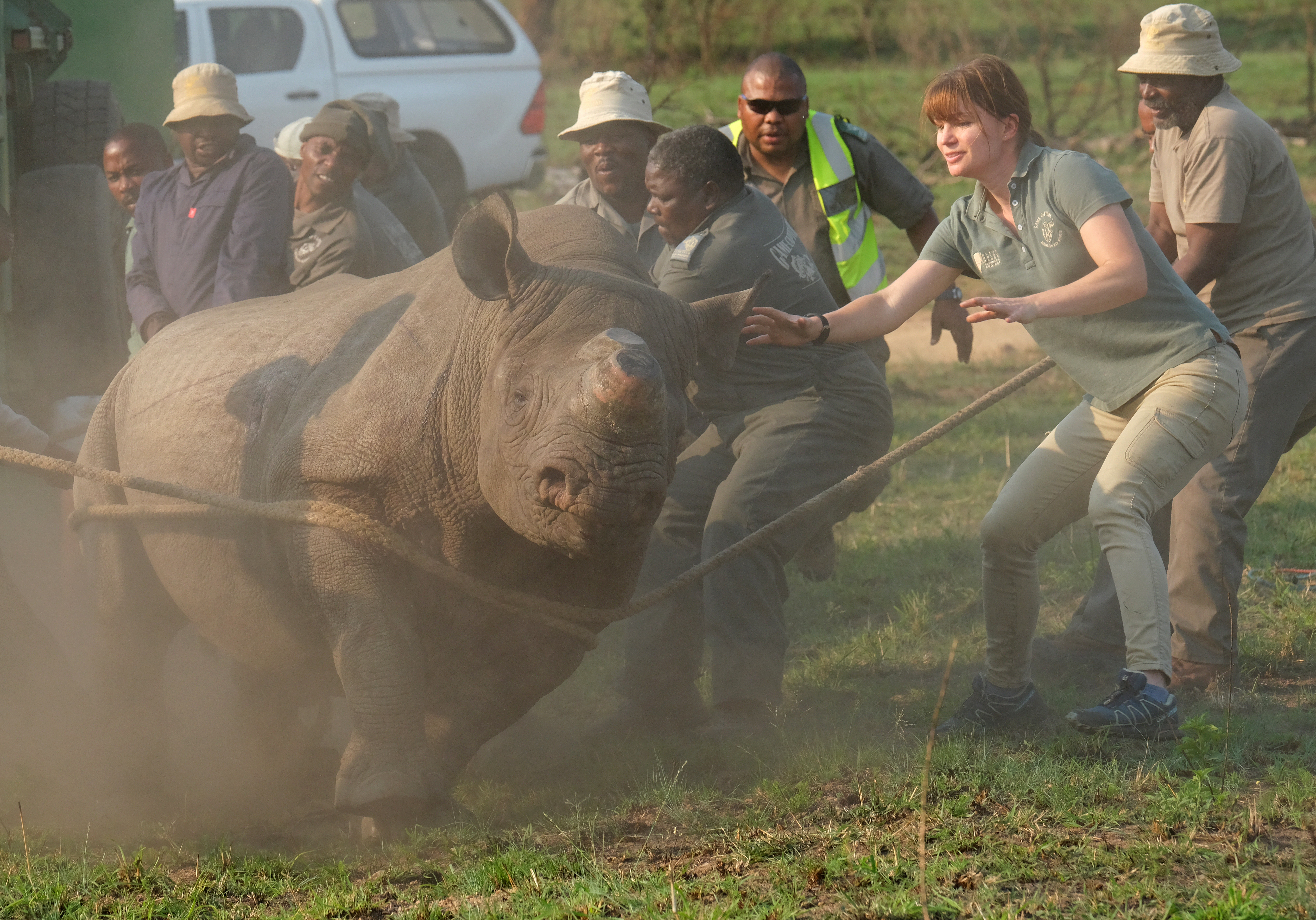
Members of the Ezemvelo KZN Wildlife game capture team and support staff battle to restrain an adult black rhino during its translocation to the Babanango Game Reserve. The capture team members include (from left to right) Musa Nkosi, Xolani Zwane, Philemon Ndwandwe, Sakhile Myeni, Zakhe Mahlaba, Zamokuhle Gumede, Bongani Zondi, Thulani Nkosi and Ursina Rusch from the WWF Black Rhino Range Expansion Project. (Photo: Seyms Brugger)
Amid this relentless killing spree, at least four survivors now have a second shot to recover and boost their species’ depleted numbers.
Jeff Cooke, the head of game capture at the Ezemvelo KZN Wildlife conservation agency, said: “The symbolism of this event cannot be overstated. The successful release of these four black rhinos that, under any other circumstance would have been lost to the species, is a strong testament to the determination and commitment of the staff at the Ezemvelo game capture facility in Hluhluwe-iMfolozi Park.
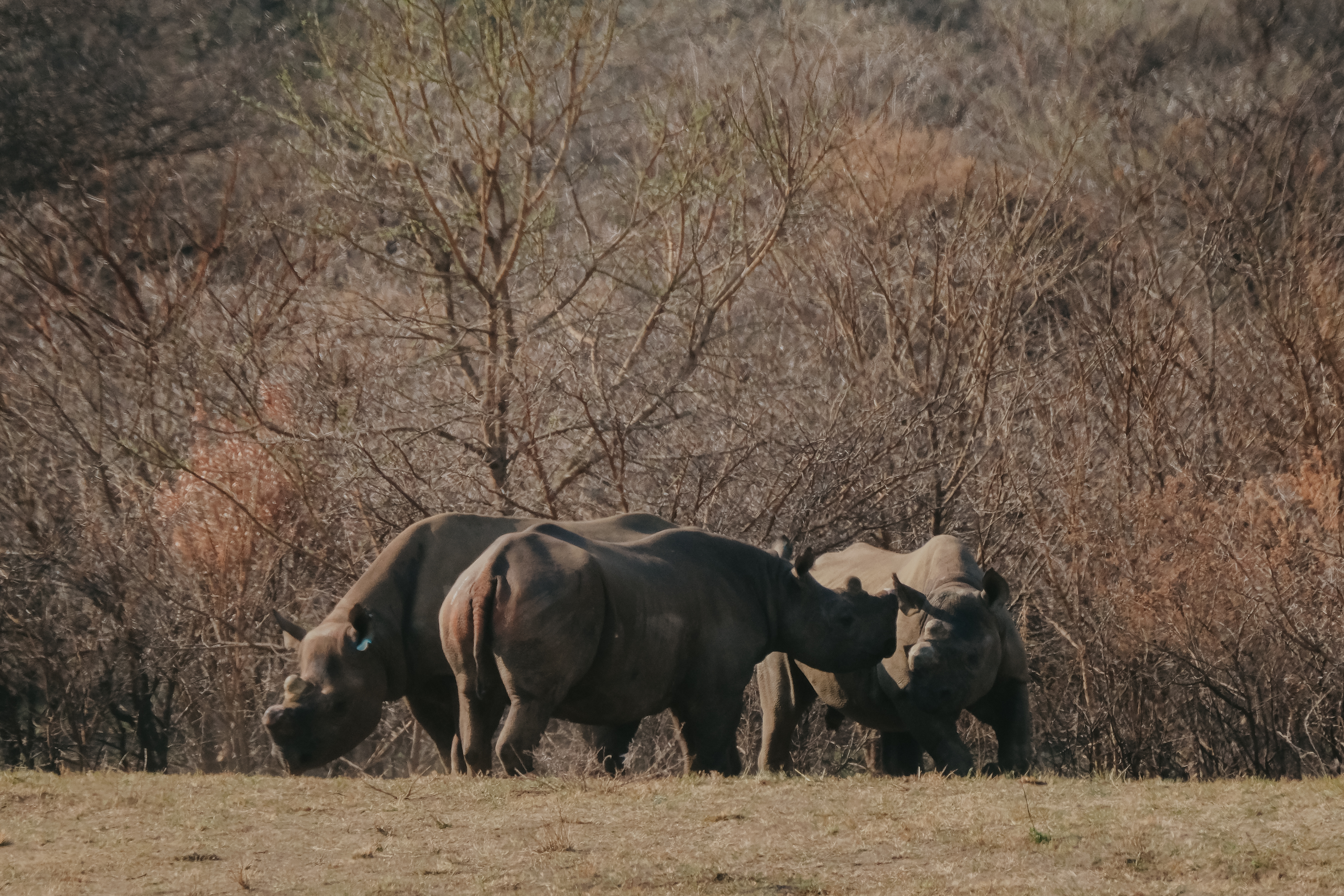
Three of the orphans explore their new home. (Photo: Seyms Brugger)
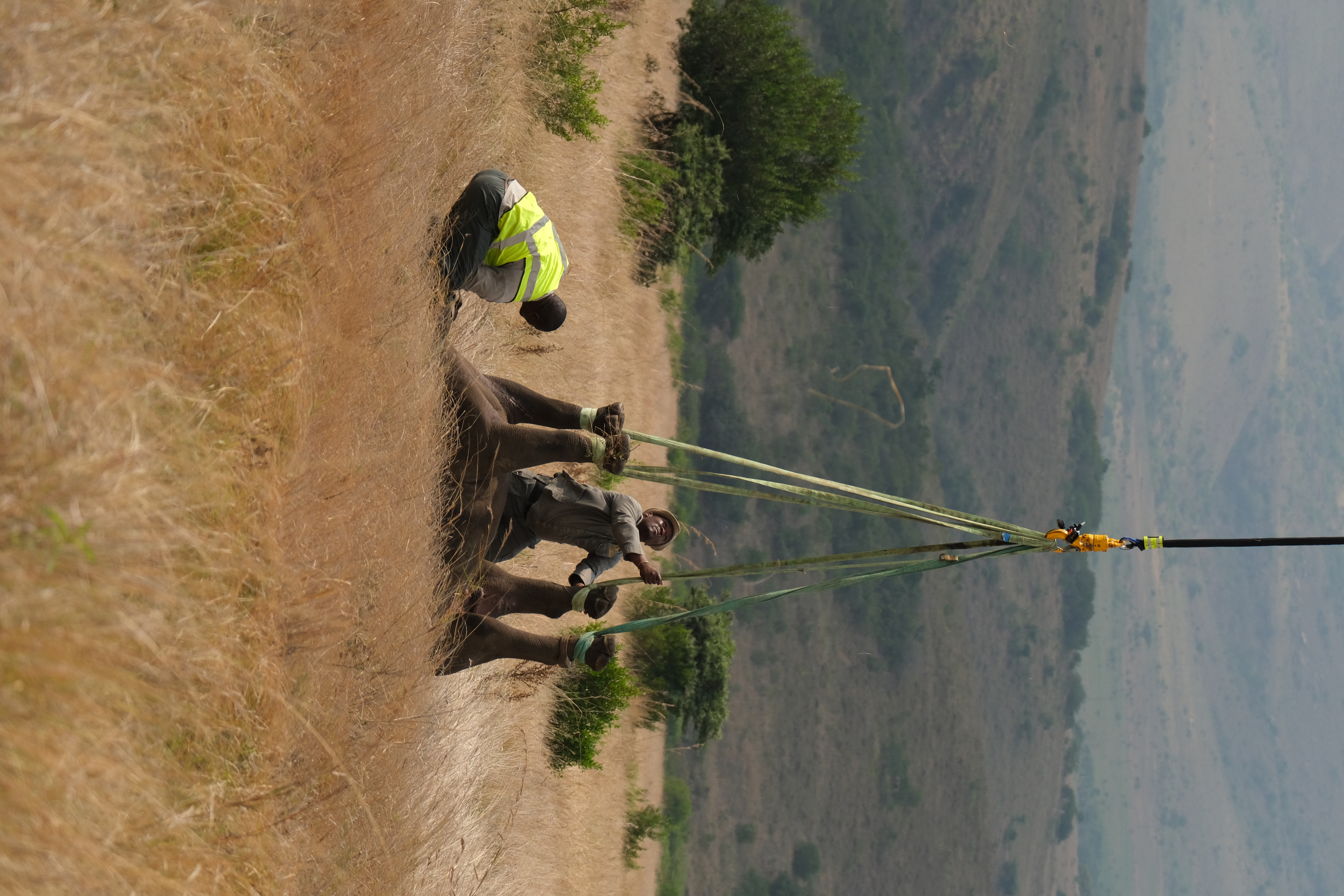
Due to rugged terrain some of the relocated rhinos had to be airlifted by helicopter to a nearby loading spot. (Photo: Seyms Brugger)
Schoolchildren donors
“They spent thousands of hours caring for them and there are also many donors and funders, some of them just schoolchildren, who gave willingly to ensure that these animals were given a chance. The message is clear: we need to remain committed and united as a province to the task of saving this iconic species, even if it is one animal at a time,” said Cooke.
The four animals, which were orphaned between the ages of two months and one year, were rescued and placed into the boma facilities in Hluhluwe-iMfolozi Park and received 24-hour care and feeding from a team led by Dumi Zwane, the officer in charge of game capture field operations.
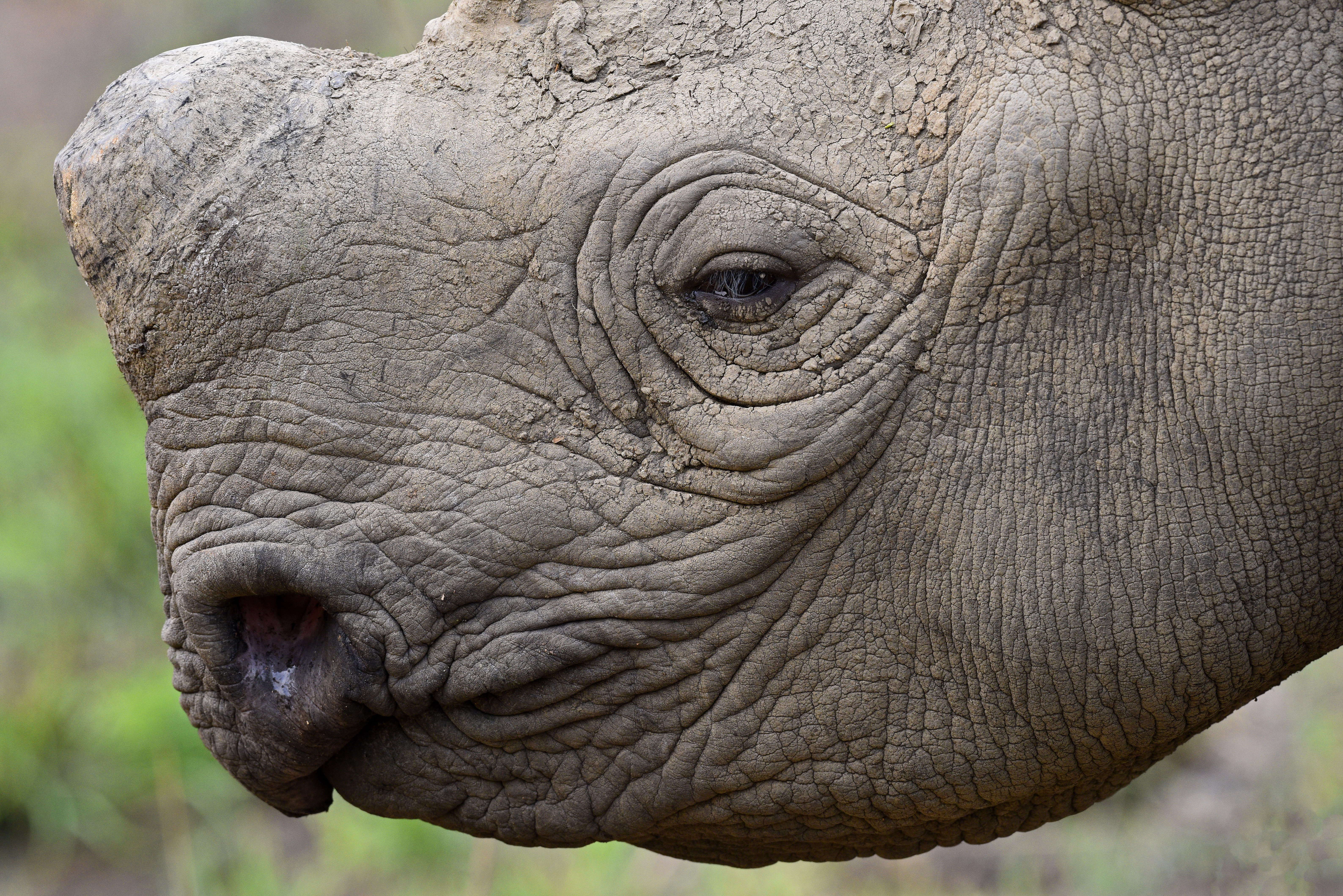
One of the orphaned black rhinos was dehorned as a safety measure. (Photo: Seyms Brugger)
Now strapping sub-adults aged between five and six years, the orphans were released earlier this month into the community-owned Babanango Game Reserve, along with a small group of older black rhinos relocated from other reserves as part of the WWF/Ezemvelo Black Rhino Range Expansion Project.
Black rhino populations suffered a drastic decline at the end of the 20th century. Between 1970 and 1993, the population decreased by 96% from about 65,000 to only 2,300 surviving in the wild.
But things are changing.
Population growth
Since 1996, intense anti-poaching efforts and strategic translocations to safer areas have allowed the species to slowly recover and the African Rhino Specialist Group estimates that there has been a 12% growth in black rhino populations in recent years — from 5,495 individuals in 2017 to more than 6,195 today.
Sadly, the numbers of the more populous southern white rhino species continue to drop sharply, in South Africa and other parts of the continent.
Each rhino has a tracking device fitted on a leg. (Photo: Seyms Brugger)
The latest assessment by the International Rhino Foundation says this population has decreased by almost 12% in the past four years, from an estimated 18,067 to fewer than 16,000 today.
In Kruger National Park, once home to the largest rhino population in the world, overall rhino numbers have crashed by between 66% and 70% over the past decade. This is why finding new and more secure living spaces for both rhino species has become critical.
Visit Daily Maverick’s home page for more news, analysis and investigations
Last week, in partnership with the WWF Black Rhino Range Expansion Project, Wildlife ACT and Conservation Outcomes, the new founder group of black rhinos was loaded into crates and trucked to the 20,000-hectare Babanango Game Reserve.
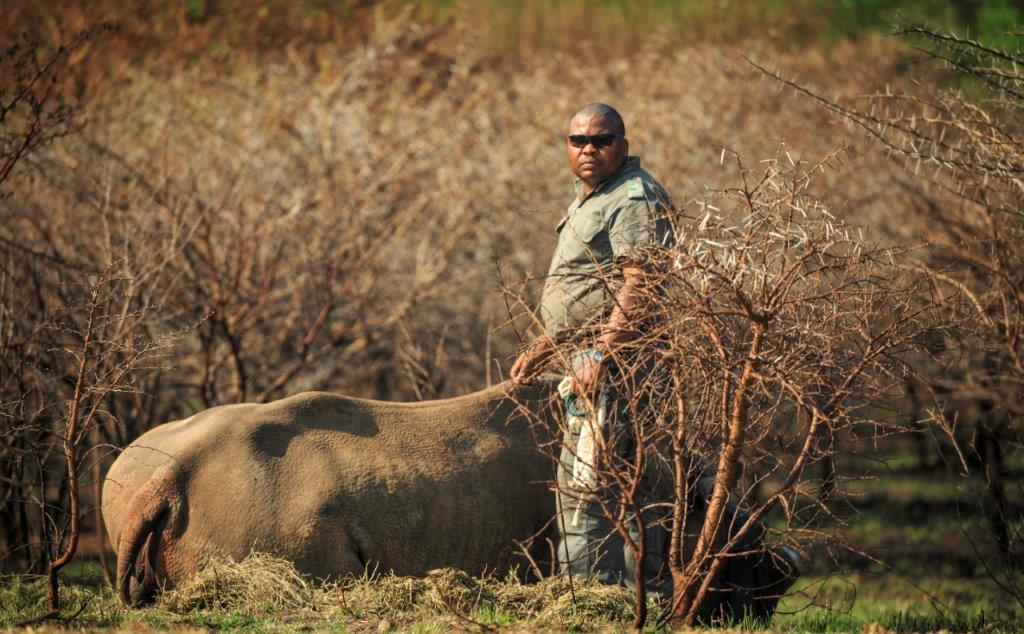
The translocation of the orphans was an emotional moment for Dumisani Zwane, officer in charge of Ezemvelo KZN Wildlife game capture field operations. (Photo: Chris Galliers)
More than 75% of the land in the Babanango reserve is owned by members of the surrounding Emcakwini, KwaNgono and Esibongweni community trusts.
To bolster their protection, each rhino has been fitted with a tracking device to ensure effective post-release monitoring.
“We are extremely grateful to committed partners in devoting their land, money and resources to black rhino conservation. It is wonderful that these orphans were rescued by Ezemvelo and now have a chance to become part of a new wild population,” said the range expansion project leader, Dr Jacques Flamand. DM/OBP






















 Become an Insider
Become an Insider
Comments - Please login in order to comment.